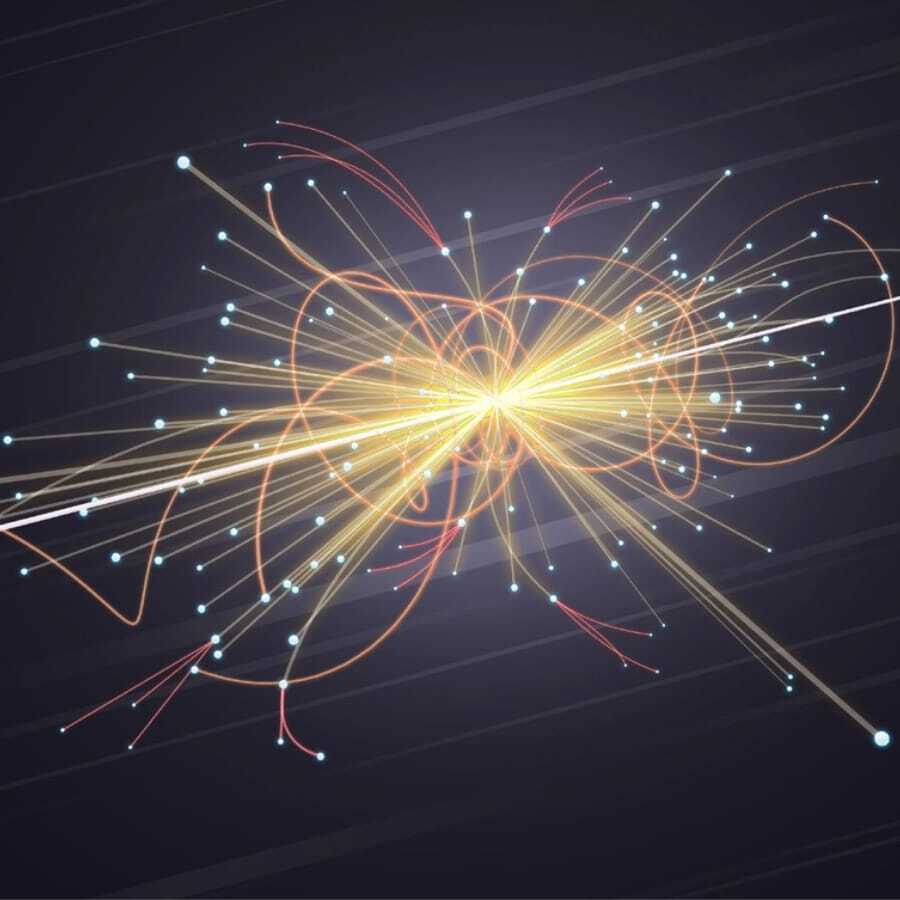Nowadays everyone is talking about the experiment done at Fermilab on the anomalous magnetic moment of the muons that might point to new physics. So now we are going to get into a hell lot of scientific terms like magnetic moment, virtual particles, Feynman diagrams and so on. So be ready for what’s coming ahead.
When an electron is revolving, it creates a magnetic field behaving like a magnetic dipole having a north and south pole. It gives rise to what we call the dipole moment (μ). Dipole moment is equal to the electron current (I) times the area of revolution (A). The revolving electron also has angular momentum (L) = mvr.
The ratio of the dipole moment to the angular momentum calculated comes out to be


[the_ad id=”7507″]
Finding the reality with Muons
But this has been calculated neglecting the various quantum mechanical phenomena. According to Quantum Mechanics, Elementary particles have “intrinsic Angular Momentum” known as the spin angular momentum (S). Thus, The quantum mechanical calculation gives the value as,

Now consider a muon going in a particular direction. It interacts with the magnetic field present in that region via virtual photons which are the mediators of the electromagnetic field. A muon in the magnetic field absorbs a photon and gets scattered. This can be represented by the Feynman diagram as

Now there is a small thing you need to know about the behaviours of charged particles in a magnetic field. In the presence of an external magnetic field, the direction of the spin will precess around the magnetic field. It will rotate with the axis being the direction of the magnetic field like a spinning top precesses around the axis of its rotation. The rate of precession is directly proportional to the magnetic moment and the applied Magnetic field (Rate ∝ μ*B). For now, we are going to call the direction of spin as the direction of spin magnetic moment for obvious reasons.
[the_ad id=”7507″]
The Feynman Diagrams and Connection to Muons
The g factor for the muon calculated from this single-photon interaction comes out to be ‘2’. But according to the theory, this is not the only contribution. From quantum mechanics, vacuum is not empty. It has a large amount of fluctuating energy here and there. Every now and then, virtual particles are being created and annihilated in a very short time. So theoretically the interaction of the muon with the magnetic field can happen through many other possible ways.

Every next process in the diagram is much more complicated than the previous process, but the more complicated it is, the less is its probability of occurring and hence its contribution to the g-factor gets lesser. The theoretical value of g is more than 2 and is equal to 2.00233183620.
Getting back to the experiment done at Fermilab
A beam of muons is sent through one direction, all having the same direction of the spin magnetic moment. It is passed through a circular region creating a uniform magnetic field. Due to the force of the magnetic field, muons start revolving inside the circular chamber at a very huge speed comparable to the speed of light. Due to the effect of the magnetic field, the spin magnetic moment of the muon starts precessing. By measuring the rate of the precession, one can calculate the magnetic moment of the particle and thus the g factor.

Now, a few things about muon,
1. Muon is 200 times heavier than the electron, so it very quickly disintegrates into a positron (electron with a positive charge) and two neutrinos (electron neutrino and a muon neutrino). But as the Muons are moving so fast, the time gets dilated for them and this process occurs after a slightly longer time.

[the_ad id=”7507″]
2. Due to a phenomena called Parity Violation, electrons (or positrons) get emitted into one direction (i.e. the direction of spin magnetic moment) with more probability than in other direction. The Energy of the electrons emitted in the spin magnetic moment direction is slightly higher than the electrons emitted in any other direction.
But due to the precession of the Spin Magnetic moment due to the presence of the Magnetic field, the Energy of the emitted electrons oscillates at a certain frequency (i.e. the frequency of the precession).

From the frequency of these oscillations the precession frequency can be determined. With the help of frequency the magnetic moment and so the g factor can be calculated.
The value of g can be expressed as
g = 2 + α, where a is a very small number
So, (α = g – 2) is the measure of the contribution of other Feynman Diagrams i.e. the significance of more complicated processes.
The Real Questions
The theoretical value which was calculated long back and the experimental value determined in the Laboratory do not match quite well. What could be the reason for this? It’s a very big question than you can imagine. There can be many possibilities but few in which we are interested in can be one of these:
1. There can be new particles (which are yet to be discovered) which are created as virtual particles in the process.
2. There can be a new force among the interaction of these particles through which they interact.
3. There can also be a possibility that we need some more Experimental data to get more and more close to the theoretical value.
So, Now Fermilab is running the experiment in five phases to get more data to get to the final answer. Whether it is the whole new physics that will come out or the confirmation of our solid theory (Standard Model) we do not know now for sure.
[the_ad id=”7507″]



